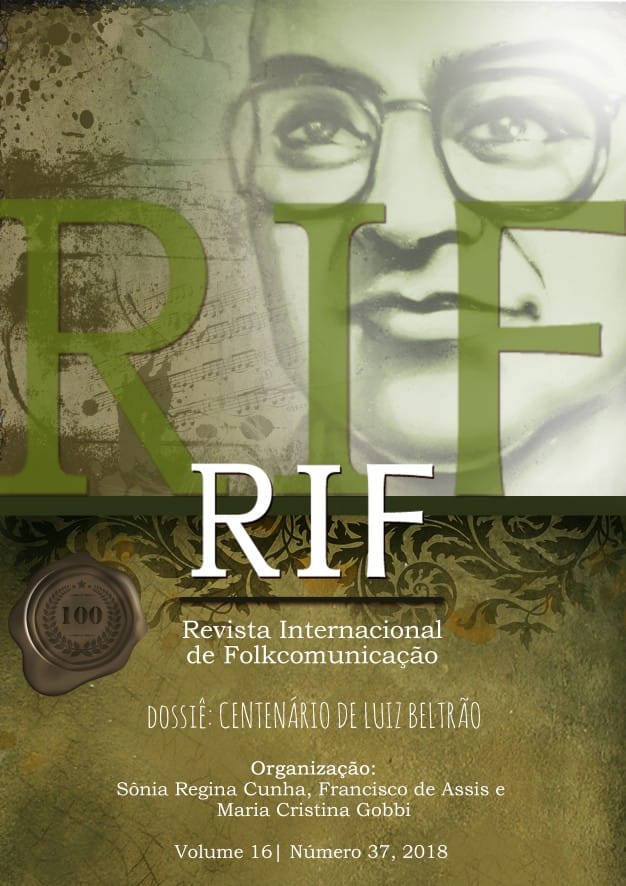Popular culture in Amapá webjournalism: the representations of the Festa de São Tiago
DOI:
https://doi.org/10.5212/RIF.v.16.i37.0013Abstract
From the theoretical discussion related to the concepts of Folkcommunication, the present article intends to describe how the actors involved with the Festa de São Tiago, in Amapá, are represented in the local webjournalism. The tradition of celebrating the feast was brought from Africa to the village of Mazagão Velho in the eighteenth century, keeping in the temporal space by oral narratives. In order to make the observation, the work used the methodological route based on the categorization of news sources – specialist, reference, testimonial, institutional, notable, corporate, official and popular – in the G1 Amapá and SelesNafes.com sites, during July 2017. However, although the rituals and the history of the festival are marked by the intense presence of popular culture, there were predominant official sources in the survey of 20 verified publications. Folkcommunication; Festa de São Tiago; Webjournalism.
Downloads
Downloads
Published
How to Cite
Issue
Section
License

Este obra está licenciado com uma Licença Creative Commons Atribuição 4.0 Internacional.
Os autores são responsáveis, em qualquer que seja o formato do texto, pelas opiniões expressas ou indiretas presentes em seus respectivos trabalhos, não endossáveis pelo Conselho Editorial e pelos editores da Revista, bem como pela autenticidade do trabalho. Ao publicar trabalhos na Revista Internacional de Folkcomunicação, os autores cedem automaticamente os direitos autorais à publicação para veiculação das produções acadêmicas, sem ônus para a Revista. Os autores detêm os direitos autorais do texto para o caso de publicações posteriores e concedem à Revista Internacional de Folkcomunicação o direito de primeira publicação, com o trabalho simultaneamente licenciado sob a Creative Commons Attribution License, que permite o compartilhamento do trabalho com reconhecimento da autoria e publicação inicial nesta Revista. Por serem publicados em revista de acesso livre, os artigos são de uso gratuito, com atribuições próprias, em atividades educacionais e não-comerciais, sendo permitida a publicação simultânea em repositórios institucionais.































